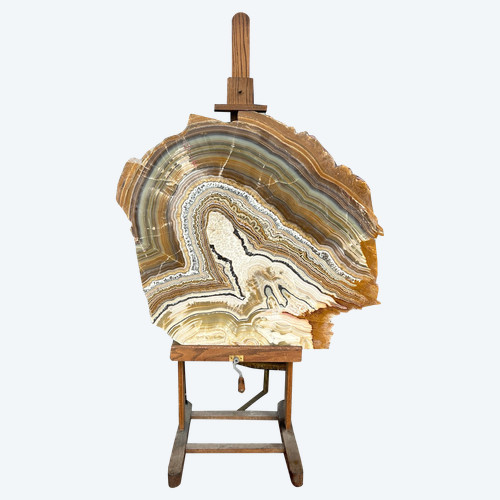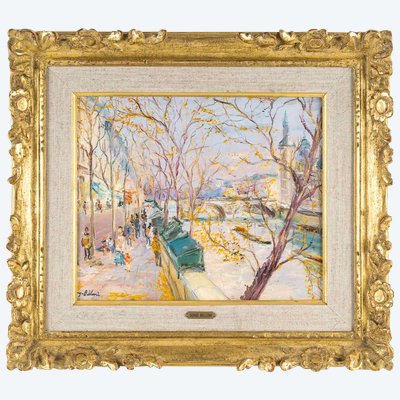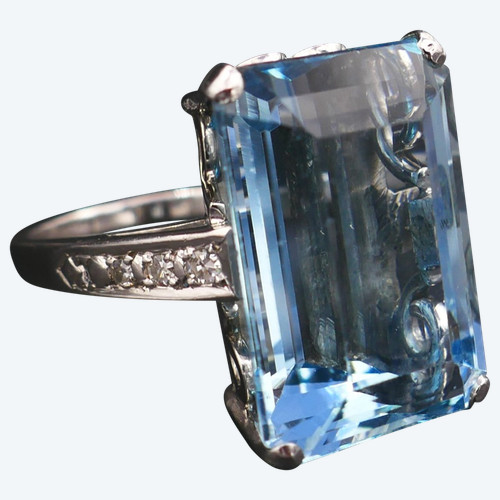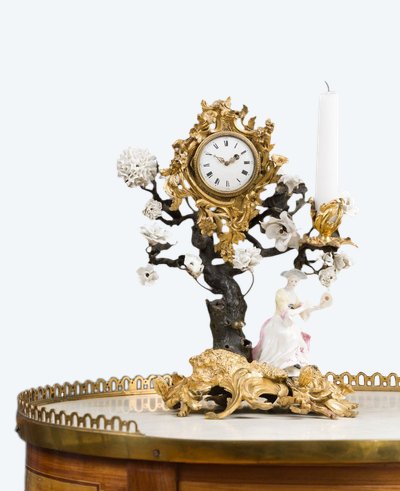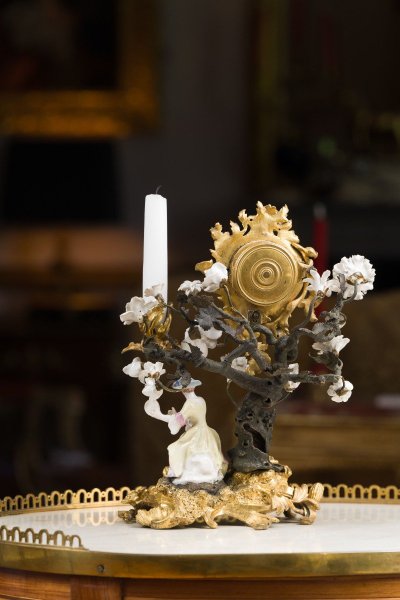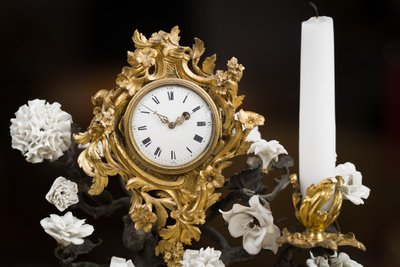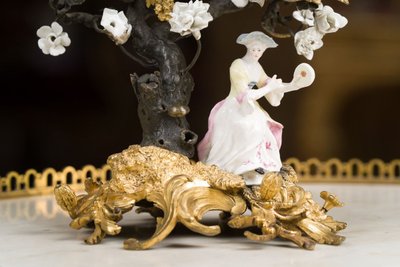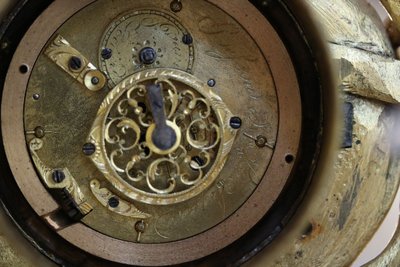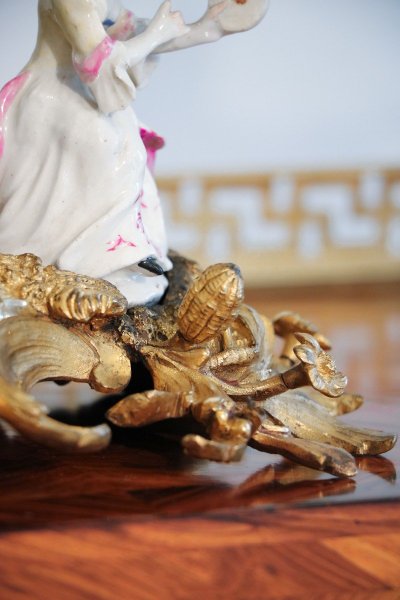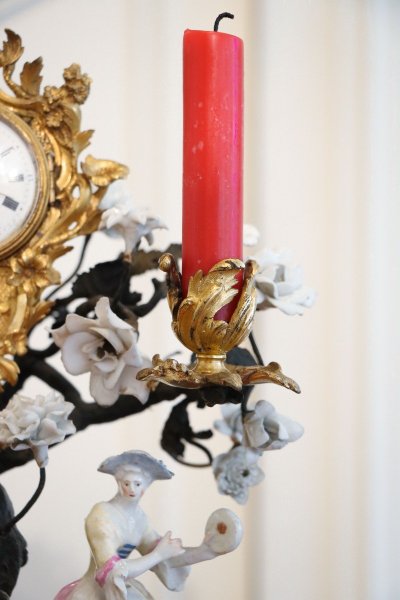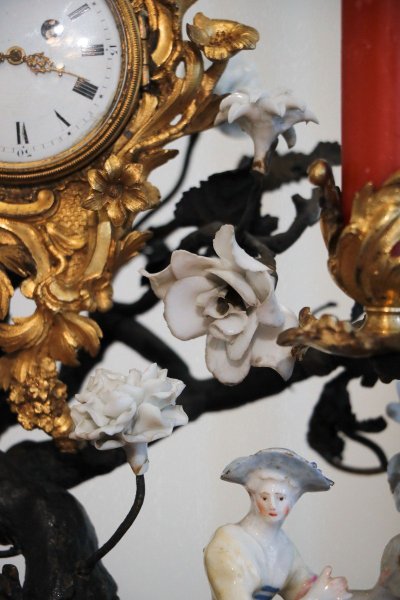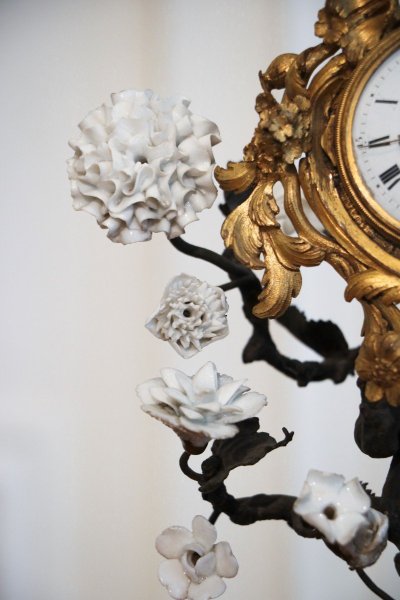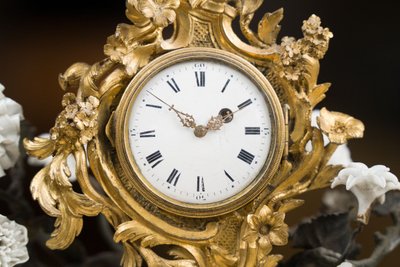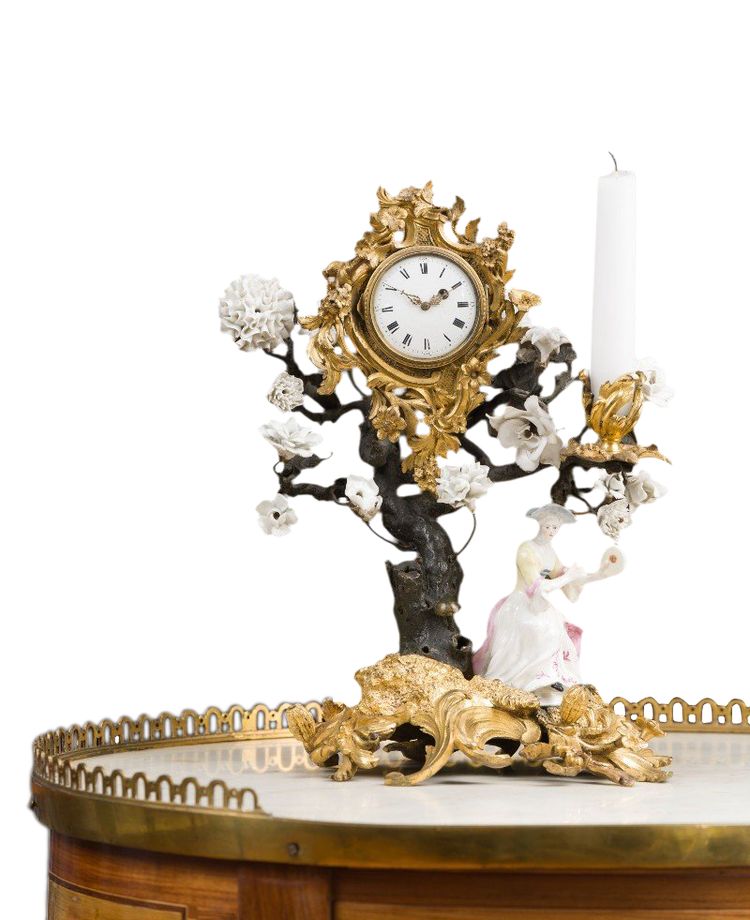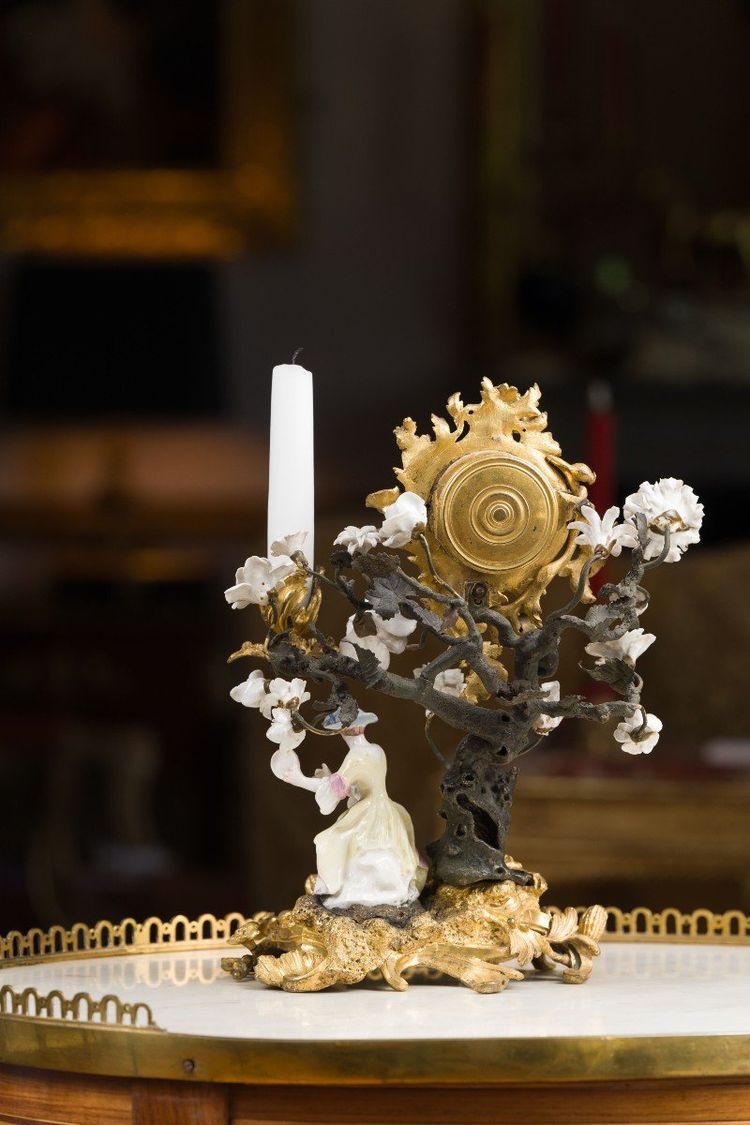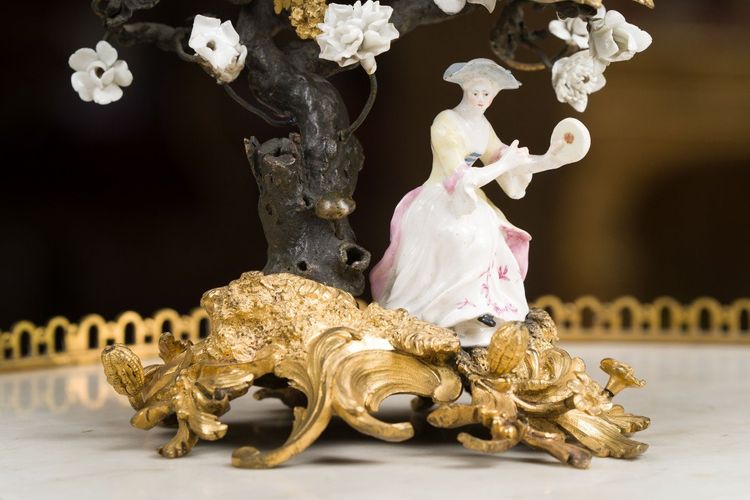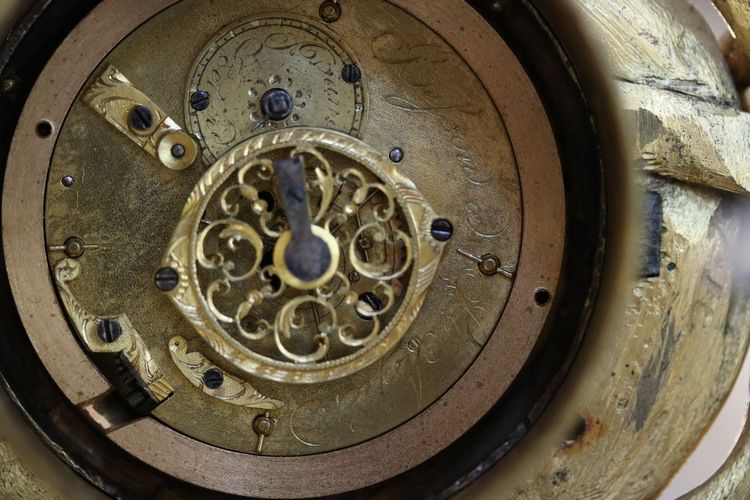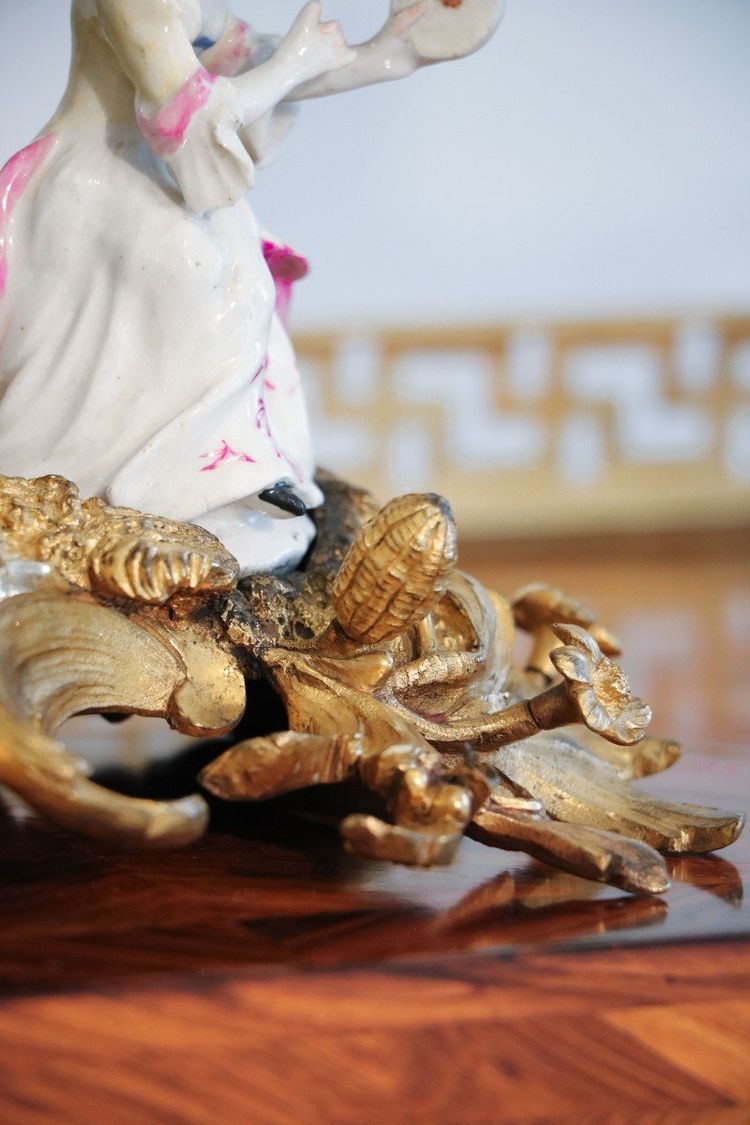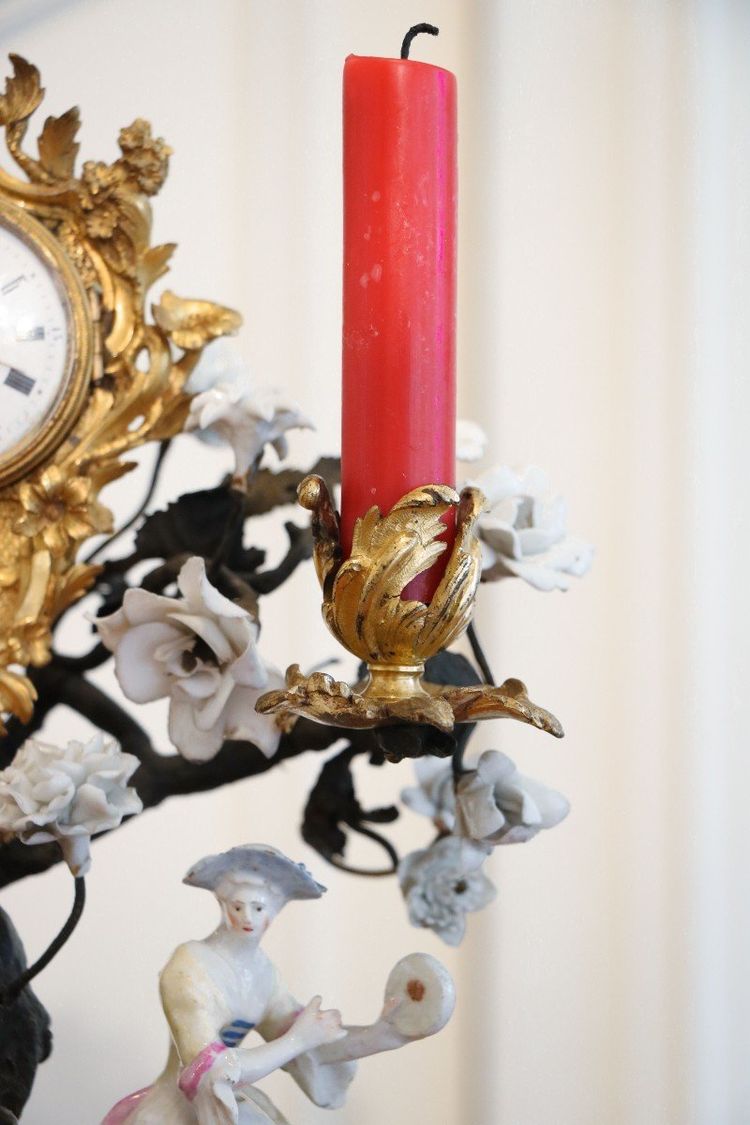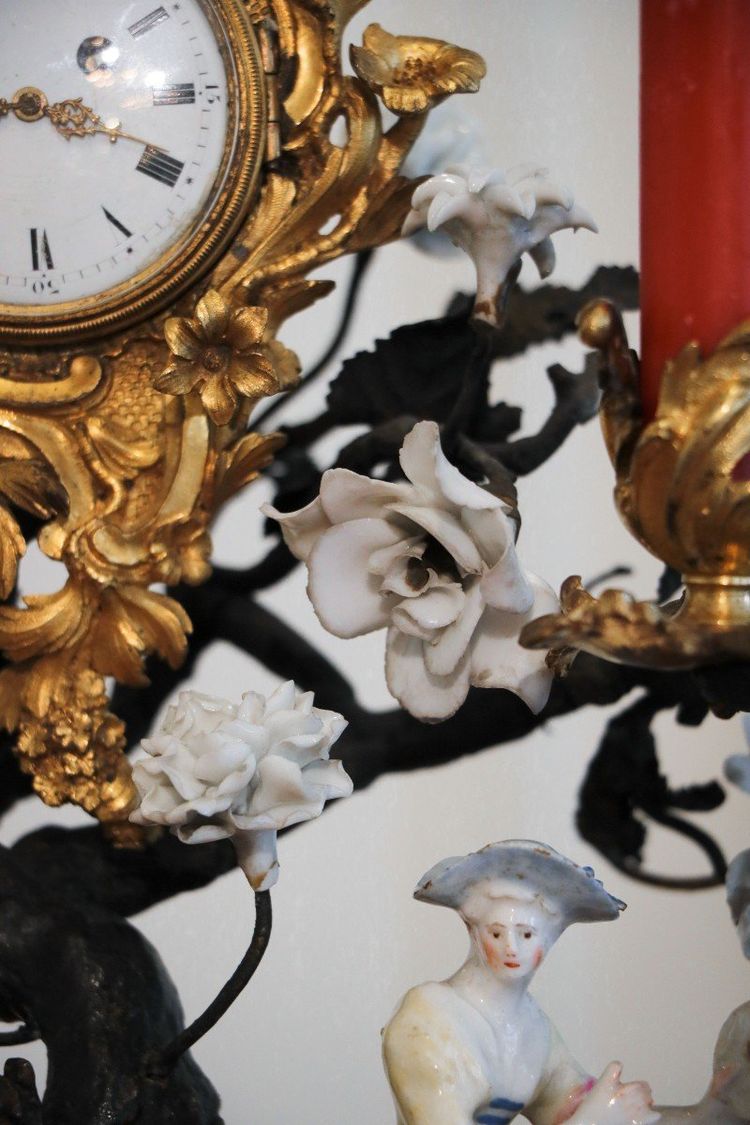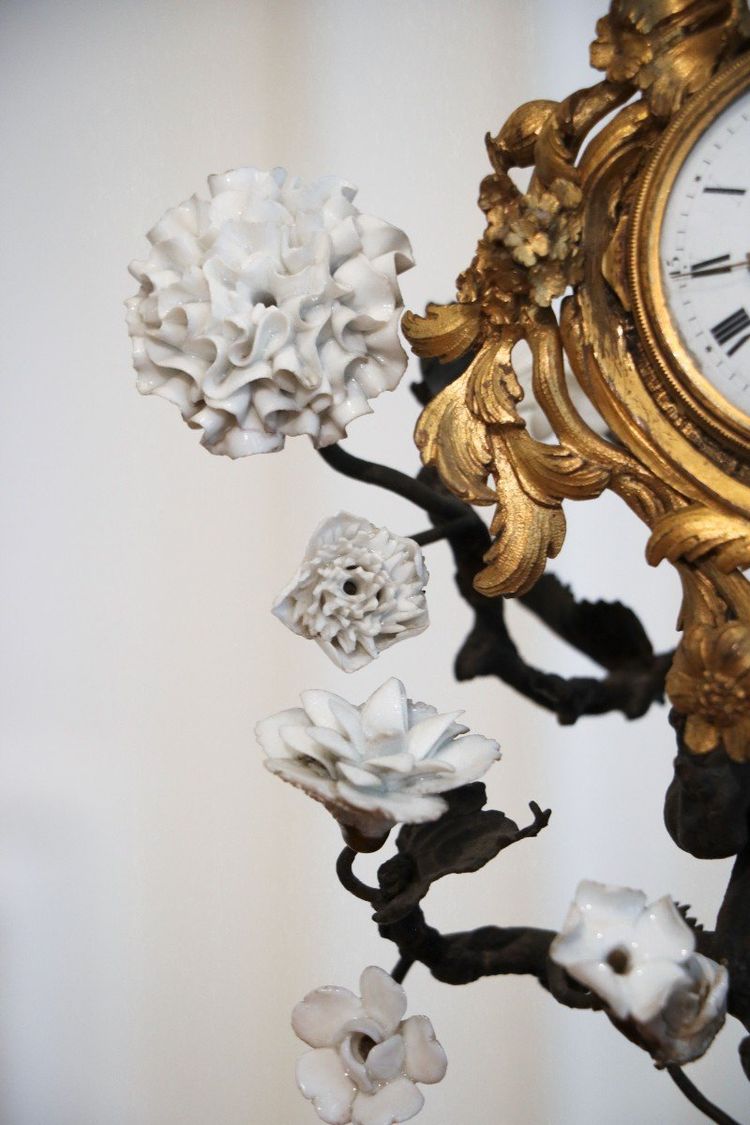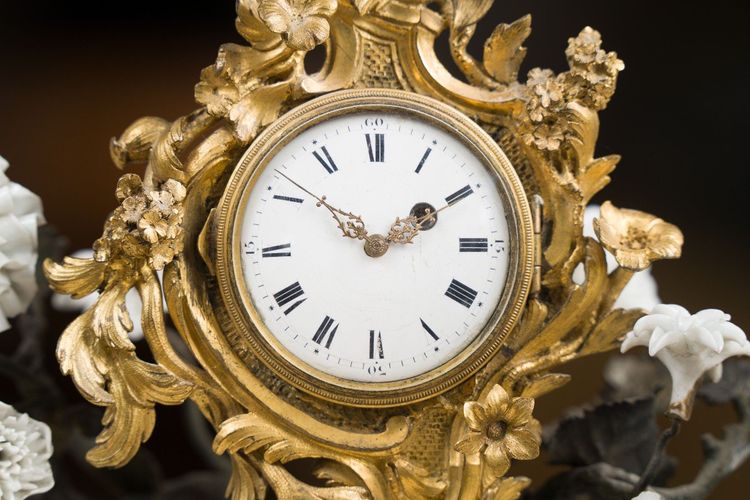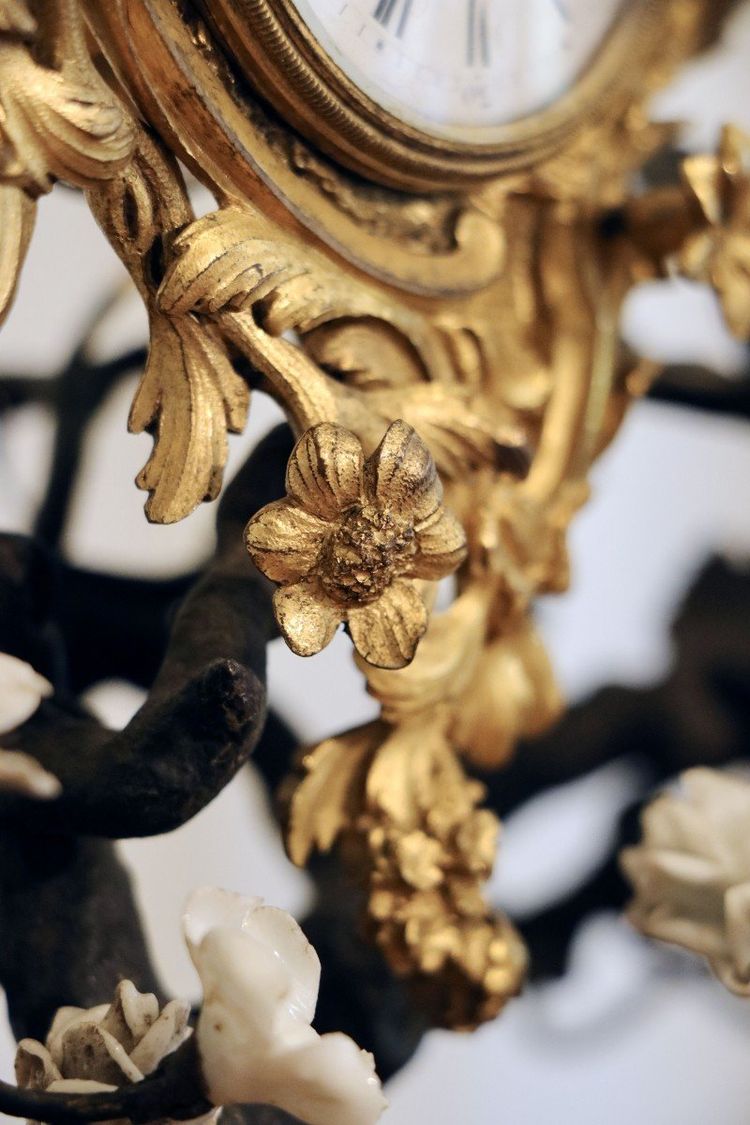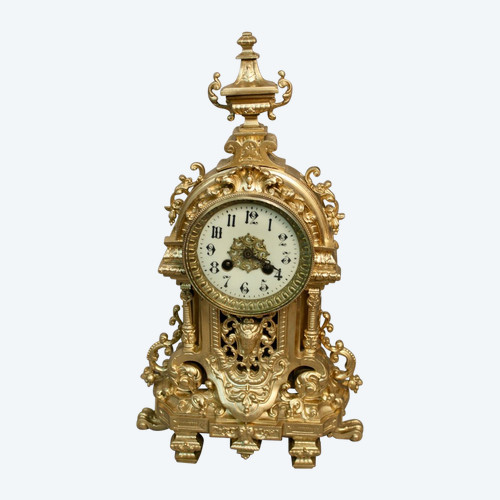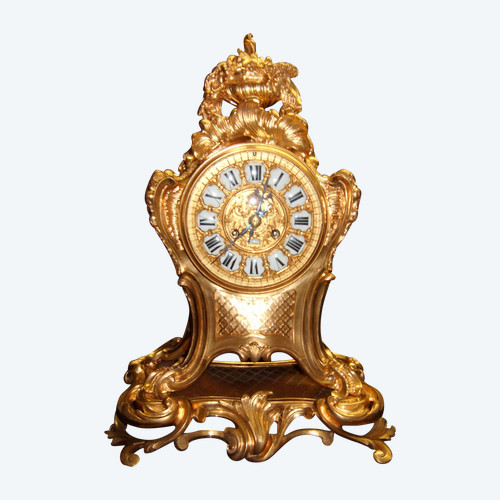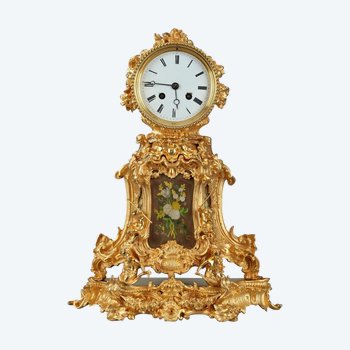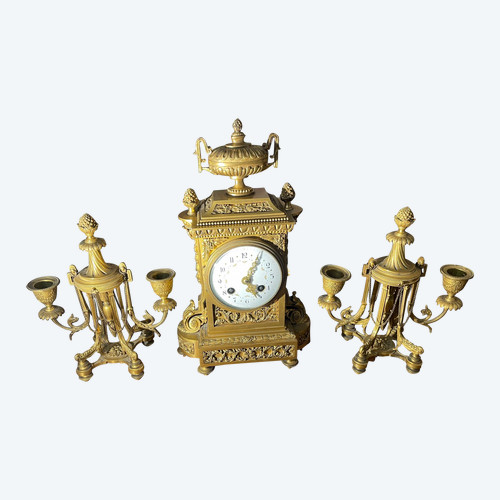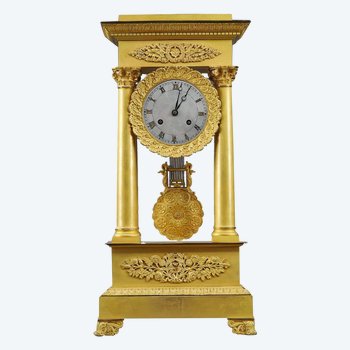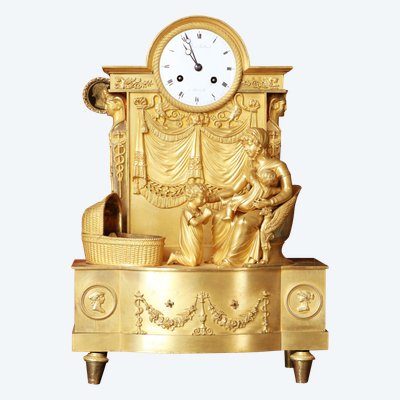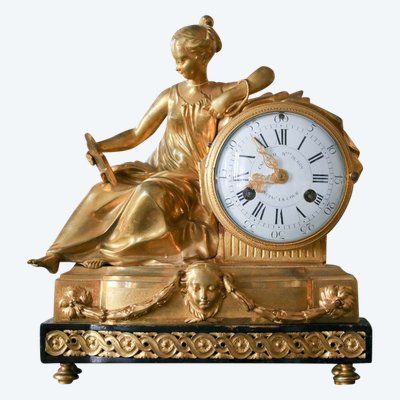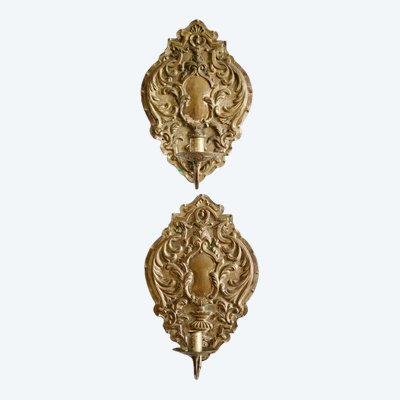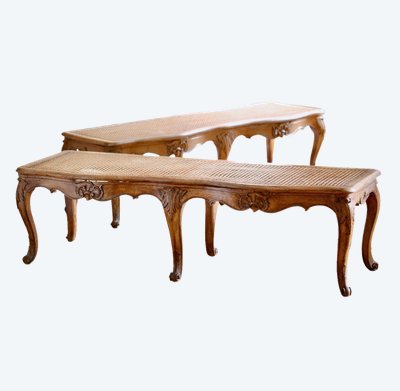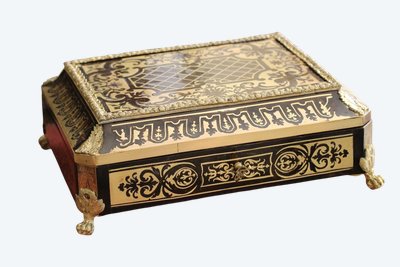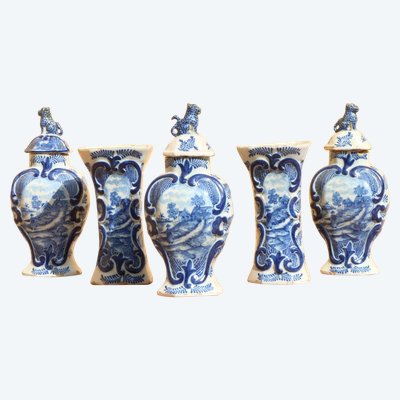This description has been translated and may not be completely accurate. Click here to see the original
Rare small gilt bronze and patinated clock forming a candlestick. The clock features a stylized tree in patinated bronze supporting a finely chased miniature cartel adorned with flowers and an arm of light in gilded bronze, as well as white flowers in Meissen or Vincennes/Sèvres porcelain. The clock rests on a gilded bronze terrace imitating the floor, also richly decorated with flowers and Rocaille motifs. It features a small female figure holding a tambourine, probably in Meissen porcelain.
Louis XV period
The Louis XIV movement is signed on the back "Befson à St ...".
Restoration, dial to be replaced.
H. 30 x W. 25 x D. 18 cm
The clock in our study is of rare delicacy. One only has to look at the overall composition to realize that we are dealing with a clock of remarkable quality. It is a clever imitation of a tree holding a miniature cartel between its branches. Everything is done to amuse the eye: the floor takes on the texture of the earth, we notice the little mushroom growing at the foot of the tree, the gilded bronze flowers on the cartel are as many details as they are pleasing decorative elements. The mix of materials so dear to the mercer merchants makes this a real gem. The Meissen figure gives life to this scene, which we can describe as sculpture. The white porcelain flowers seem to have just blossomed at the end of the branches. The fragility of the porcelain contrasts with the strength and solidity of the bronze in the structure. The colors, too, form a strong contrast between the gilded and patinated bronze, which are rarely used in such clocks.
In addition to this sophisticated aesthetic, the clock features two original features: the arm of lights and its size. Clocks combining gilded bronze and porcelain with figures are always very popular. However, the very small size of this clock makes it an important element in its description. Pierre Kjellberg, in his book "Encyclopédie de la pendule française" (Editions de l'Amateur), refers to the rarity of clocks of this type measuring no more than 30 cm. They are therefore equipped with a watch movement, hence the name "porte-montre".
The light arm is another interesting feature. This complete object has a few "sisters" with whom we can make a comparison. A clock with two light arms is reproduced on page 148 of Pierre Kjellberg's book. Another featuring a small Meissen figure and porcelain flowers is reproduced in the book "La pendule française" (Part 1, Editions Tardy, page 176). Finally, Christie's auction house presented a clock this time with four arms of light, a figure and flowers on November 27, 2018 under number 504.
In this way, this clock is particularly representative of both the Rocaille taste, and the importance of mercer merchants in the production of objets d'art. Decorators before their time, they produced original creations that often combined luxurious materials such as lacquer, bronze and porcelain, for which the elites were infatuated, following the example of Madame de Pompadour, who collected large quantities. It's worth remembering that the production of European porcelain was an artistic revolution that took place at the turn of the 1710s, and remained highly sought-after by art lovers right up to the eve of the French Revolution.
Clocks such as ours are often associated with the trade of the merchant Lazare-Duvaux, who specialized in this type of object. He was particularly fond of porcelain, which he set on many pieces of furniture and objects.
Ref: 8QQ3GE1JE6


